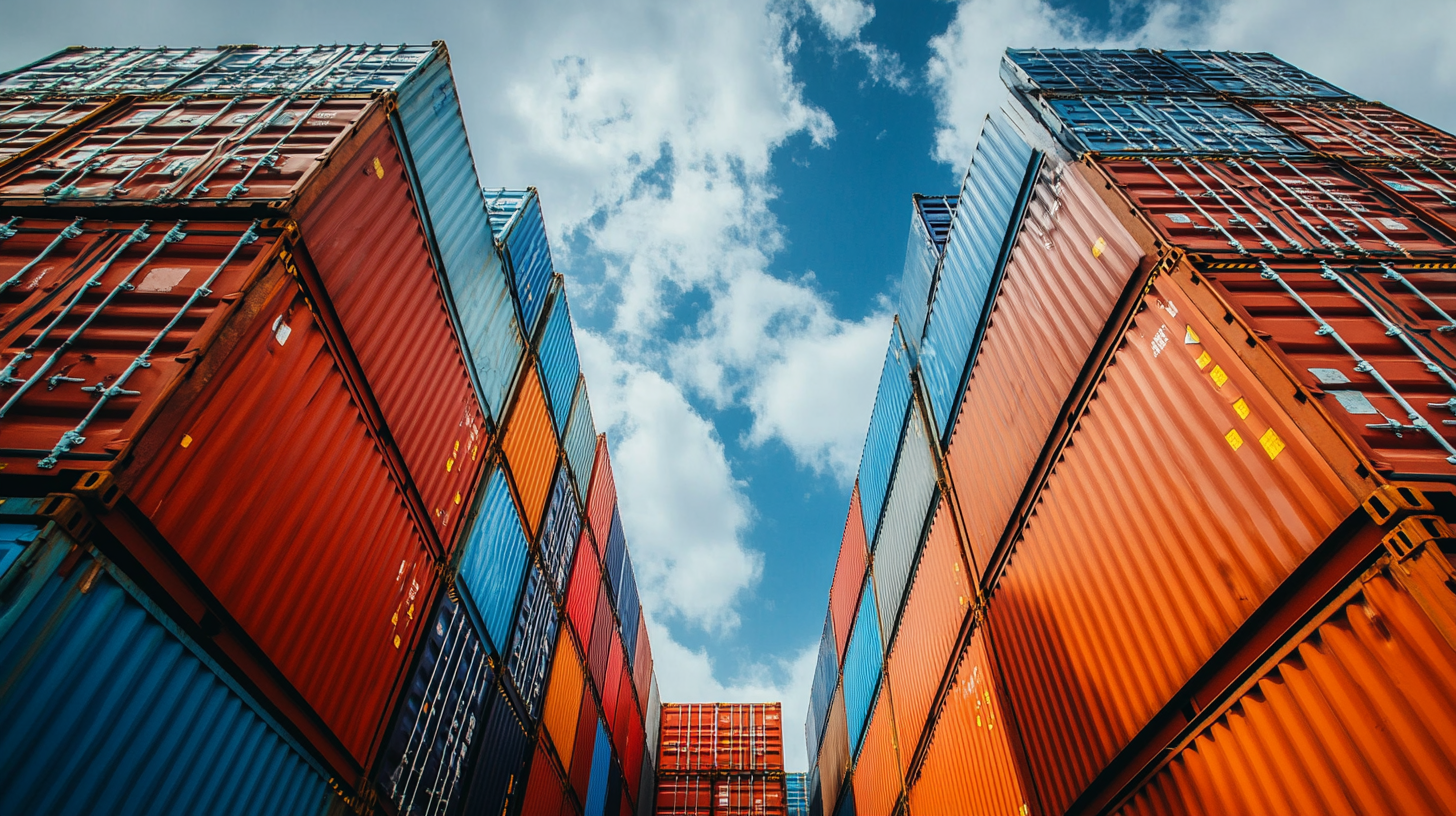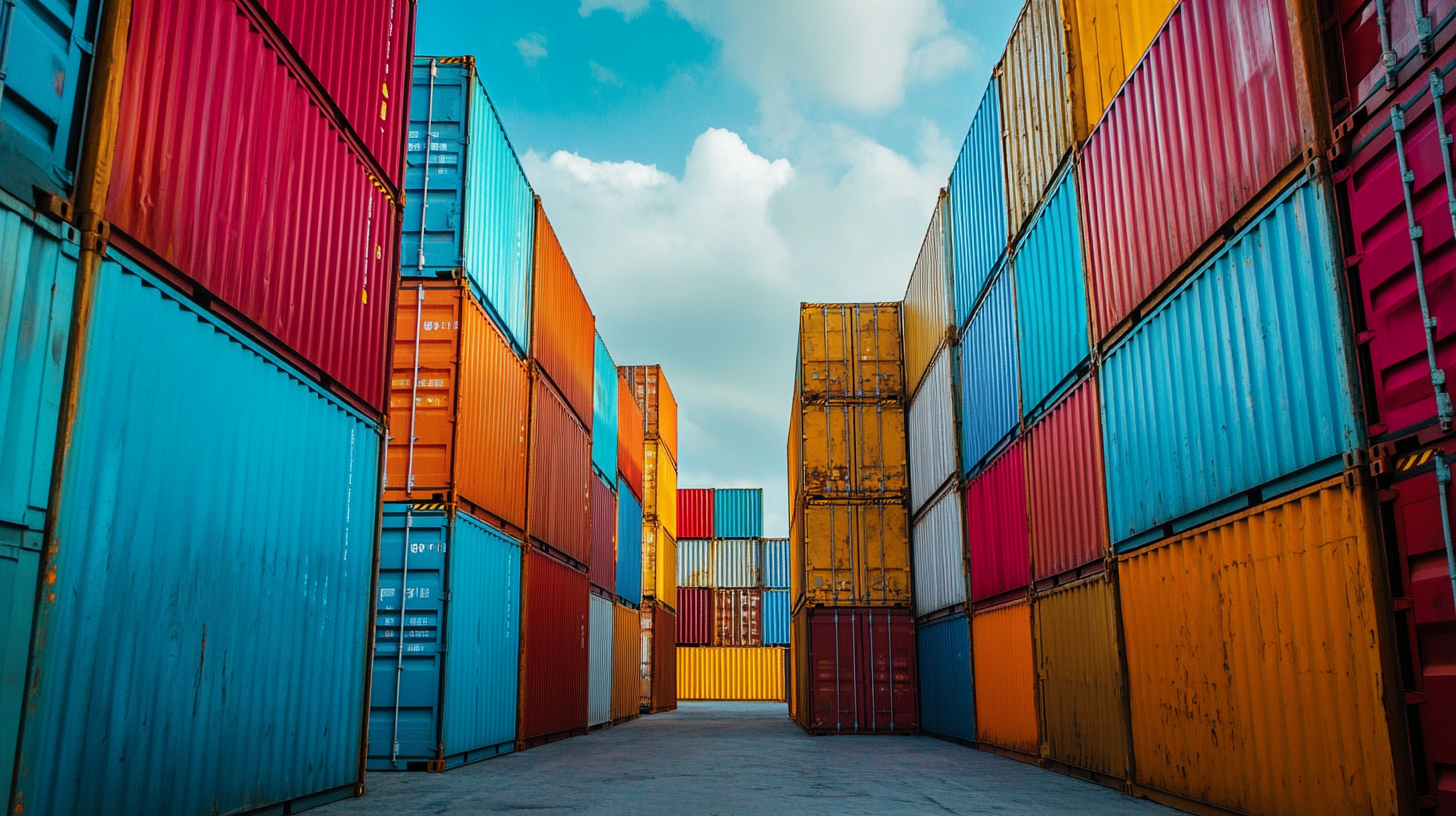In recent years, the demand for efficient and versatile container storage solutions has significantly increased, driven by both the e-commerce boom and the need for effective inventory management. According to a report by MarketsandMarkets, the global market for container storage is projected to reach $XX billion by 2025, growing at a CAGR of XX%. This surge highlights the importance of not only selecting the right type of container storage but also partnering with high-quality suppliers who can meet diverse industrial needs. As businesses strive for optimization and cost-effectiveness, the exploration of various container storage types—ranging from portable storage units to specialized climate-controlled containers—becomes essential. This ultimate guide aims to help industry professionals identify the most suitable container storage solutions and reputable suppliers, ensuring streamlined operations and improved warehouse management.

In today’s fast-paced logistics landscape, container storage solutions play a crucial role in streamlining operations and enhancing efficiency. As businesses increasingly turn to globalization, the ability to store and manage products effectively becomes paramount. Container storage not only aids in organizing goods but also helps in optimizing space and reducing transportation costs. Investing in the right types of container storage can lead to significant improvements in inventory management and overall productivity.
Tip: When selecting container storage, it’s essential to assess the specific needs of your operations. Consider factors such as the size and type of goods you need to store, accessibility, and the layout of your storage facility. Customizing your container solutions can greatly enhance efficiency.
Additionally, implementing a robust tracking and management system for your containers can elevate your logistics strategy. Utilizing technology such as RFID tags or inventory management software ensures real-time monitoring and helps avert issues like overstocking or understocking.
Tip: Regularly review and update your container storage practices to adapt to changing logistics demands and improve operational agility. This proactive approach will enable businesses to capitalize on new opportunities and reduce potential disruptions in the supply chain.

When it comes to container storage, understanding the various types available can significantly enhance efficiency in different applications. Shipping containers are among the most popular choices, primarily used for transporting goods across long distances. Their robust structure and weather-resistant materials make them ideal for both maritime and on-land logistic needs. Additionally, modified shipping containers can serve as on-site offices, mobile retail stores, or even living spaces, showcasing their versatility in urban and rural settings alike.
Another notable type is the plastic storage container, which is lightweight and often used for household items and seasonal decorations. These containers are typically stackable and come with secure lids, making them perfect for organizing smaller items and saving space. In contrast, metal storage containers are frequently employed in industrial environments. They provide enhanced security for valuable equipment and materials. When selecting the right container, it’s essential to consider the unique benefits each type offers, along with their intended application, to optimize space utilization and accessibility.
Shipping containers have evolved far beyond their traditional role in maritime transport, finding diverse applications across various industrial sectors. According to a report by the World Bank, the global container shipping market is projected to reach approximately $10 billion by 2027, driven by increasing international trade and the growing demand for efficient transport solutions. Industries such as retail, construction, and healthcare are increasingly leveraging container storage for flexibility and scalability.
One significant application of shipping containers is in the retail sector, where pop-up stores are becoming a popular trend. A study by the National Retail Federation highlights that 90% of retailers who use pop-up strategies report increased brand awareness and customer engagement. Containers enable businesses to create temporary retail spaces that can be relocated easily based on demand.
Tips: When considering container storage solutions, assess the specific needs of your industry. For example, in construction, use insulated containers to store tools and materials securely on-site. In healthcare, ensure containers are equipped for temperature-controlled storage to maintain the integrity of sensitive medical supplies. Understanding the unique requirements of your sector will lead to more effective utilization of container storage.
| Container Type | Dimensions (ft) | Ideal Sector | Common Use Case |
|---|---|---|---|
| Standard Shipping Container | 20 x 8 x 8.5 | Shipping & Logistics | Transporting general goods |
| Reefer Container | 40 x 8 x 8.5 | Food & Agriculture | Transporting perishable items |
| Open Top Container | 20 x 8 x 8.5 | Construction | Transporting heavy equipment |
| Flat Rack Container | 40 x 8 x 8.5 | Manufacturing | Transporting oversized loads |
| Tank Container | 20 x 8 x 8.5 | Chemical Industry | Transporting liquids and gases |
When considering container storage options, cost and space utilization efficiency are paramount factors for businesses. According to a report by Statista, the global self-storage market was valued at approximately $47 billion in 2020 and is projected to grow significantly, underscoring the demand for efficient storage solutions. In this context, different types of container storage, such as shipping containers, portable storage units, and climate-controlled facilities, vary widely in both initial investment and long-term operational costs. For instance, while traditional self-storage units can range from $80 to $300 monthly depending on location and size, shipping containers may offer a more economical alternative with an average purchase price between $1,500 and $3,000, representing a one-time investment.

Space utilization efficiency is further enhanced by the unique characteristics of each storage type. A detailed analysis from the Self Storage Association highlighted that companies leveraging smart storage solutions can improve their operational capacity by as much as 30%. Shipping containers, particularly, can be stacked and arranged to maximize available space, adapting to various needs without the overhead associated with fixed storage units. Moreover, portable storage units can remove the need for additional transportation costs, as they can be delivered directly to a site. Therefore, organizations must consider both the financial implications and the space efficiency of their chosen storage solutions to ensure they meet strategic operational goals.
The landscape of container storage is rapidly evolving, driven by a dual focus on sustainability and technological advancements. According to a recent report by the International Council on Clean Transportation, the logistics sector is responsible for nearly 24% of global CO2 emissions, prompting an urgent need for greener storage solutions. Innovations such as biodegradable containers and energy-efficient storage facilities are now at the forefront, with companies increasingly adopting eco-friendly practices to mitigate their environmental impact.
Technological innovations are also reshaping container storage management. The adoption of IoT (Internet of Things) technology has seen a significant rise, with a projected growth rate of 25% annually over the next five years, as noted in a report by MarketsandMarkets. Smart containers equipped with sensors can monitor temperature, humidity, and location in real-time, enhancing inventory management and reducing spoilage. Additionally, automated storage and retrieval systems are being integrated to streamline logistics operations, thereby increasing efficiency and reducing labor costs. These trends underline a transformative shift where sustainability and technology converge, indicating a promising future for container storage solutions.
Rob was always very honest and upfront about everything and took the time to explain everything I needed.
“highly recommended. They provided us with a great storage container with ontime services.”
“Bought a used container, its perfect, no leaks and in good condition.”
“Good service and prompt delivery. A great option for temporary storage at a decent price.”
Join our mailing list to get the latest storage container inventory and offers